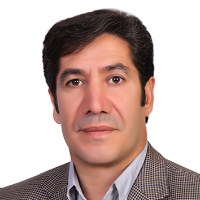Analysis and zoning of soil erosion rate and its relationship with hydrogeomorphic indicators and vegetation (case study: Khiavchai watershed, MeshkinShahr)
Soil erosion is one of the serious environmental threats that can affect the political, social and economic aspects of countries. One of the widely used experimental models for estimating the amount of soil erosion is the modified global soil erosion equation known as the RUSLE model. The purpose of this research is to analyze and zonate the amount of soil erosion and its relationship with hydrogeomorphic indicators and vegetation cover of Khiavchai Meshkinshahr watershed in Ardabil province. RUSLE model factors include rain erosion (R), soil erodibility (K), topography (LS), vegetation (C) and protection operations (P). respectively, by using rainfall data, soil texture layer, digital model of height and land use were prepared in the environment of geographic information system (GIS) and after overlapping the layers, the amount of annual soil erosion between 0 and 150.54 tons per hectare per year in The area level was estimated. In the next step, the hydrogeomorphic and vegetation indices that are effective in soil erosion include topographic moisture index (TWI), waterway capacity index (SPI), domain curvature index (Curvatore), section curvature index (Profil Curvatore), surface curvature index (Plan) Curvatore) and Normalized Vegetation Index (NDVI) were created in ArcMap environment and zoning maps were prepared. The results of this research also showed that the topography factor with a correlation coefficient of 0.92% had the greatest impact on the estimation of annual soil erosion by the RUSLE model. In another study, the relationship between hydrogeomorphic indices and vegetation cover with annual soil erosion rate was conducted, and the results showed that normal vegetation cover indices and cross-sectional curvature were the most and least effective with correlation coefficients of 0.57 and 0.05, respectively, compared to other indices.The results of this research confirm the possibility of combining the effective indicators of hydrogeomorphic and vegetation on erosion, as well as the possibility of using other effective indicators and the capabilities of RS and GIS to quantitatively estimate the amounts of soil erosion.
- حق عضویت دریافتی صرف حمایت از نشریات عضو و نگهداری، تکمیل و توسعه مگیران میشود.
- پرداخت حق اشتراک و دانلود مقالات اجازه بازنشر آن در سایر رسانههای چاپی و دیجیتال را به کاربر نمیدهد.



